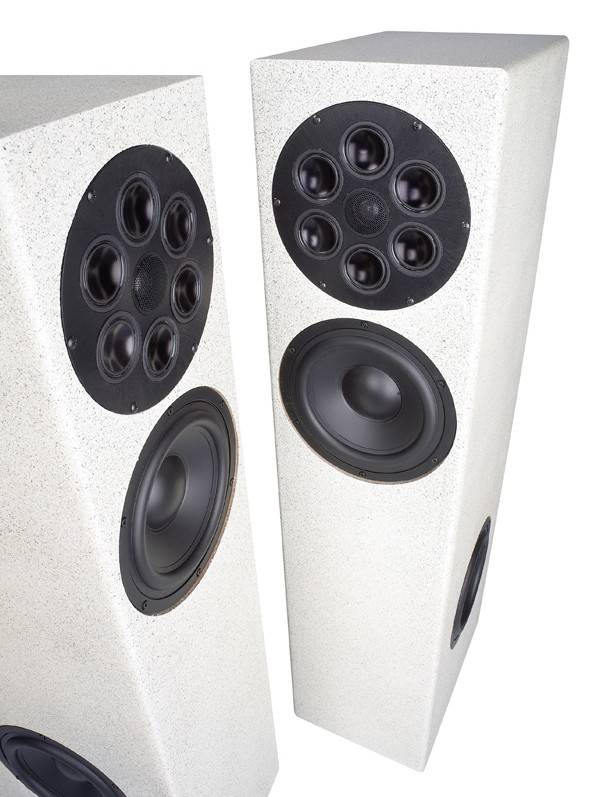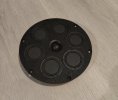On Erin's Facebook group, Andrew Jones commented on the validity of using an array of tweeter sized drivers for mid-range and he personally does not believe it makes sense base on the surface area.
... the statement is IMHO not quite right.
Sd for a 1'' tweeter is usually between 6-10cm². With six units, you would therefore have a summed dome area of approximately 36-60cm² - for example, 1'' tweeters from
SBAcoustic and
Seas.
The tweeters in the "circular midrange array" are, at least as it seems, used by Tekton as pure midrange drivers. Therefore, the crossover frequency, solely due to the high-pass behavior of the tweeter below fs (tweeter resonance frequency), should be significantly above 500Hz (actually above the fs of the tweeter, but that's another story).
So, when using six tweeters (with at least an electrical first-order high-pass filter, meaning one capacitor), the low excursion of each individual tweeter of +-0.2-0.5mm should not be a real problem.
So, one should now compare the array with "real" midrange drivers. Therefore, let's look at 4'' drivers that are usually (when used solely as midrange drivers) used from 400Hz onwards.
Their cone/dome area is around 50-60cm². For example, an
old-school paper cone midrange driver from Monacor or a
midrange dome driver from Bliesma.
One could argue that one would want to avoid resonances as much as possible. However, the larger the cone/dome area, the lower the frequencies at which eigenmodes or even break-up modes occur. As a result, the driver no longer exhibits piston-like behavior, and each resonance requires time to decay. Whether this is audible is not initially relevant in "high-end" audio (some audiophiles especially like silk domes and there you have "controlled" resonances all over the place).
A tweeter used above its resonance frequency exhibits this behavior only very late and shows piston-like behavior up to high frequencies (aside from the first possible surround resonance and except for silk dome and typical paper cone tweeters).
The logically more sensible approach would have been to investigate which midrange drivers still exhibit piston-like behavior up to the desired crossover frequency, and to build the circular midrange array from these, probably 2''-3'' midrange drivers.
This way one would have overall 90-150cm² cone area and a piston-like behavior like tweeter will have and one still could control directivity of the midrange array by grouping the drivers.

